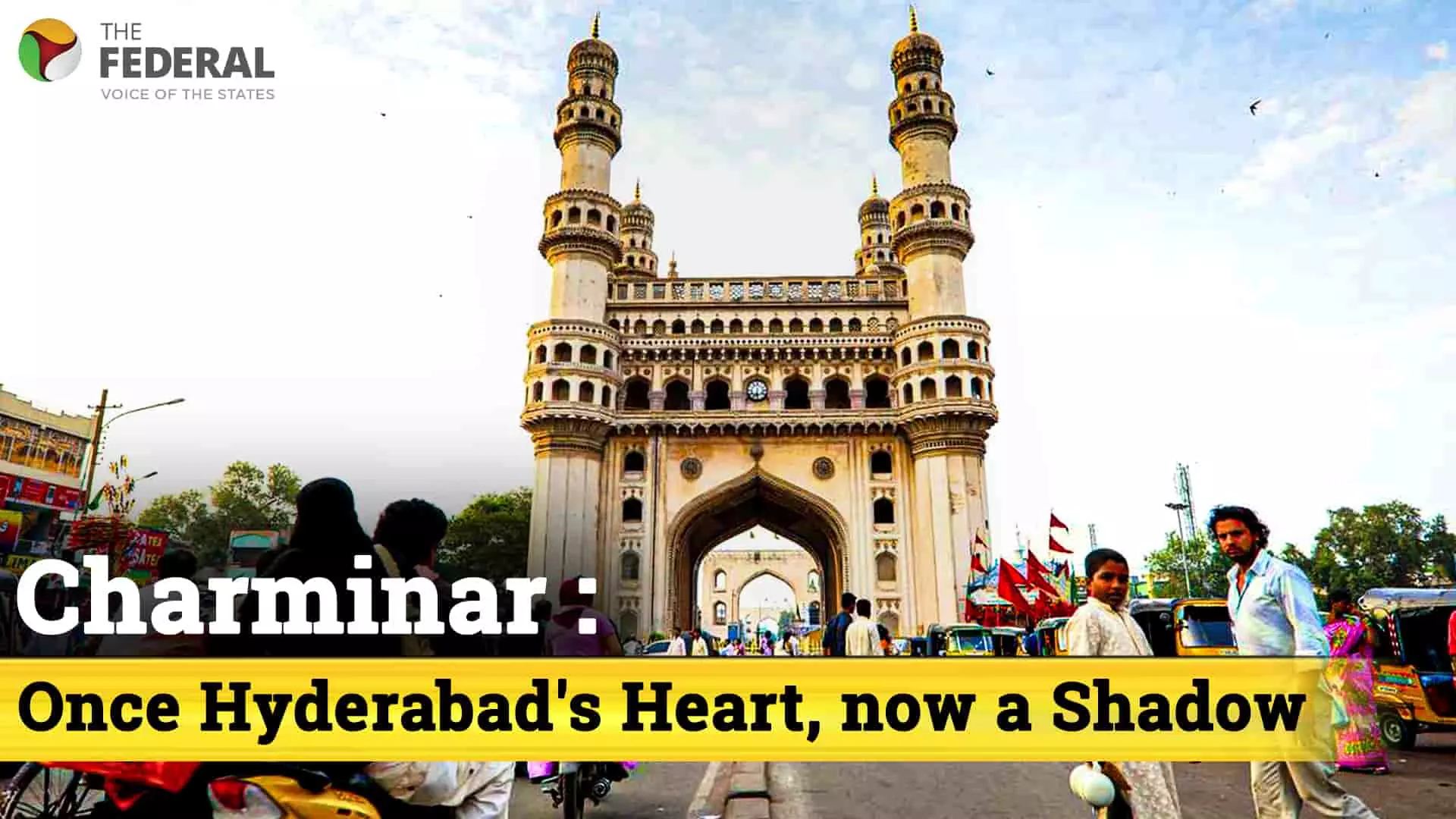
Royal then, rusted now: The decline of Hyderabad's Charminar
A glimpse into the past and present of Hyderabad’s iconic Charminar and Char Kaman, once symbols of royal splendor, now slowly fading under the weight of urban chaos and neglect

In the heart of Hyderabad, the Charminar stands not only as a 16th-century architectural marvel but also as a fading reminder of a civilisation once rich in culture, trade and vision. Built in 1591 by Muhammad Quli Qutb Shah, the founder of Hyderabad, Charminar was more than stone—it was the centrepiece of a city that dared to rival the world's greatest.
Today, the monument fights to breathe amid modern congestion, its history eclipsed by traffic, hawkers and neglect.
The monument and its meaning
Charminar was conceived not just as a ceremonial structure but as the very heart of a planned city. Its name literally meaning “Four Minarets” hints at its symmetrical design and its symbolic intent.
Built in 1591 by Muhammad Quli Qutb Shah, Charminar is not just an architectural marvel but the very heartbeat of a city he dreamt would rival the world's greatest.
At the intersection of two major trade routes—Machilipatnam and Surat—Charminar brought together merchants from across the Persian Gulf and beyond, reinforcing Hyderabad's role as a commercial and cultural powerhouse.
Inspired by Kakatiya grandeur
The idea of the four monumental arches—collectively known as Char Kaman—around Charminar had its roots in Warangal, the former Kakatiya capital.
Muhammad Quli Qutb Shah is believed to have been inspired by the famed Kakatiya Thoranalu, or the four gates of Warangal Fort. While he adapted the concept to align with Islamic aesthetics, the spatial logic remained: a central monument surrounded by symbolic arches.
Distinct function & symbolism
Each kaman had a distinct function and symbolism.
Sher-e-Batil Kaman to the west was inscribed with Quranic verses to ward off evil.
Kali Kaman to the east resonated with music and ceremonial sounds.
Machli Kaman to the north bore a fish emblem—a sign of prosperity.
Charminar Kaman to the south opened directly into the monument.
Cultural and economic crossroads
Hyderabad under the Qutb Shahi dynasty was a flourishing hub of Indo-Persian culture. Orders were issued in both Telugu and Persian. Art forms like Kuchipudi dance flourished alongside crafts like Kalamkari and Bidri.
Diamonds, pearls, silk and perfume dazzled the world from here, painting a vivid picture of the city’s golden era.
Charminar was more than a monument—it was the epicentre of a civilisation, a melting pot of trade, artistry and governance.
The fall from grace
Today, the glory is hard to imagine. Charminar’s surroundings are a far cry from its former elegance. The once-open Jilu Khana square is now choked with unregulated shops, wires, banners, and street vendors.
The music has stopped, what once echoed with the sound of shehnai now drowns in traffic noise and honking.
The arches of Char Kaman are deteriorating, their historical identity blurred by perfume stalls, kebab shops, sanitary ware displays and souvenir counters. Royal processions have given way to speeding autos and footfalls lost in the chaos.
A fading memory
What’s at stake is not just heritage, but memory. The decay of the Charminar complex isn’t merely architectural—it’s civilisational.
This is not just a loss of heritage, this is a loss of memory.
The monument that once stood as a testament to vision, ambition and cultural synthesis now risks being remembered only as a relic buried beneath commercial clutter.
(The content above has been generated using a fine-tuned AI model. To ensure accuracy, quality, and editorial integrity, we employ a Human-In-The-Loop (HITL) process. While AI assists in creating the initial draft, our experienced editorial team carefully reviews, edits, and refines the content before publication. At The Federal, we combine the efficiency of AI with the expertise of human editors to deliver reliable and insightful journalism.)

